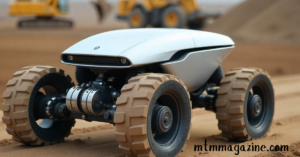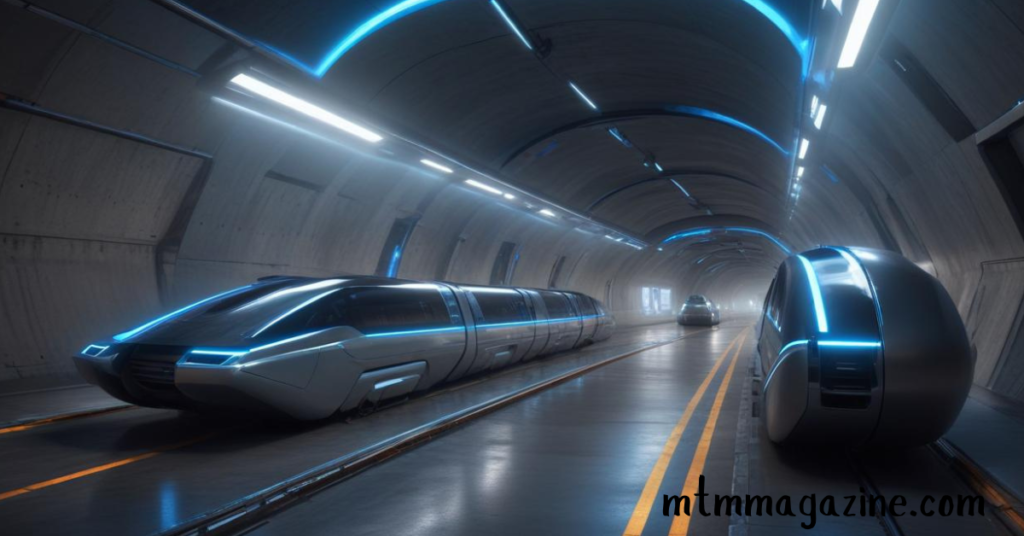Technological advancements are reshaping various industries, and the field of excavation is no exception. One of the most groundbreaking innovations in recent years is the horizontal self-burrowing robot, a technology that has garnered attention due to its potential to transform underground construction and excavation projects. Protected under a US patent, this self-burrowing robot is paving the way for more efficient, safer, and cost-effective methods of digging. This article explores how this technology works, its benefits, and its impact on the excavation industry.
What is a Horizontal Self Burrowing Robot?
A horizontal self burrowing robot is a type of autonomous machine designed to dig horizontally underground without the need for traditional heavy machinery like excavators and drills. Unlike conventional methods, which often require extensive digging from the surface, this robot can burrow directly into the ground, creating tunnels, pipes, or pathways with minimal disruption to the surface above.
Key Features of the Horizontal Self Burrowing Robot:
- Autonomous Navigation: Equipped with sensors and AI, it can navigate underground, avoiding obstacles and adjusting its path as needed.
- Minimal Surface Disruption: Because it operates entirely below the ground, there is less need for surface excavation, making it ideal for urban areas or sensitive environments.
- Precision Digging: The robot is designed to create precise tunnels with smooth, even walls, which can reduce the need for additional lining or reinforcements.
How Does the Horizontal Self Burrowing Robot Work?
The technology behind the horizontal self-burrowing robot is complex but fascinating. Here’s a breakdown of how it operates:

1. Advanced Sensors and AI
-
- The robot uses a combination of GPS, lidar (light detection and ranging), and ultrasonic sensors to map its surroundings. This enables it to detect underground obstacles like rocks, utility lines, or other structures and adjust its path accordingly.
2. Drill Bit and Auger System
-
- At the front of the robot, there is a specialized drill bit or cutting head that breaks through the soil. An auger system then pushes the excavated material to the back of the robot, where it is either transported out of the tunnel or compacted into the tunnel walls for stabilization.
3. Automated Steering and Control
-
- The robot’s onboard computer uses algorithms to control its speed, direction, and digging force. This ensures that it maintains a consistent trajectory, whether it’s digging in soft soil or hard rock.
4. Energy Efficiency
-
- Most of these robots are powered by rechargeable batteries or are tethered to an external power source, which allows for extended operation with minimal environmental impact.
Benefits of the Horizontal Self Burrowing Robot
The introduction of this innovative robot offers several advantages over traditional excavation methods:
1. Reduced Cost and Time
-
- Traditional excavation can be expensive and time-consuming, especially in urban areas where rerouting traffic and clearing space for heavy machinery adds to the cost. The horizontal self-burrowing robot, however, requires minimal surface disruption, reducing labor and material costs.
2. Improved Safety
-
- Digging underground comes with risks, including cave-ins, exposure to hazardous materials, and damage to existing infrastructure. This robot minimizes these risks by allowing operators to manage excavation remotely, thus reducing the likelihood of accidents.
3. Environmentally Friendly
-
- By minimizing the need for large-scale surface digging, the robot helps preserve the surrounding environment. This is particularly beneficial in ecologically sensitive areas where traditional excavation could cause significant damage.
4. Versatile Applications
-
- This technology can be used in various industries, including laying utility pipes, creating underground storage, and even in agriculture for subsurface irrigation systems. It’s also suitable for repairing existing underground structures without causing damage to the surface.
Real-World Applications and Success Stories
The horizontal self-burrowing robot is already being tested and implemented in several real-world projects:

-
Urban Infrastructure:
- Cities like New York and Los Angeles have explored using these robots for installing fiber optic cables and other utilities. This reduces the need for disruptive road closures and surface digging.
-
Pipeline Installation:
- In the oil and gas industry, these robots are being used to install pipelines in remote or environmentally sensitive areas, minimizing surface impact and reducing the need for extensive land clearing.
-
Agricultural Projects:
- Farmers are beginning to use this technology for installing underground irrigation systems. This allows for efficient water distribution while maintaining the integrity of the topsoil.
Challenges and Future Potential
While the horizontal self burrowing robot presents many advantages, it also faces challenges:
- Technical Limitations: The technology is still evolving, and there are limitations in terms of the depth and distance these robots can dig.
- High Initial Costs: While they reduce long-term costs, the upfront investment in this technology can be high, which may deter some companies from adopting it.
- Regulatory Hurdles: There are also regulatory challenges, as new guidelines may be required to ensure safe and effective use of these robots in urban and rural areas.
However, as technology continues to improve, we can expect these challenges to be addressed. Future advancements may include more powerful digging capabilities, improved battery life, and enhanced AI for even more precise navigation.
Conclusion
The horizontal self burrowing robot, protected by a US patent, represents a significant leap forward in excavation technology. By offering a safer, more efficient, and environmentally friendly alternative to traditional methods, it has the potential to revolutionize various industries, from construction to agriculture. As this technology continues to evolve, we can expect it to play a crucial role in the future of underground infrastructure development.
Whether it’s reducing the impact of urban construction projects or providing a more sustainable way to lay pipelines and cables, the horizontal self-burrowing robot is poised to change the way we think about excavation. This innovative technology is just the beginning of a new era in automated underground construction.



